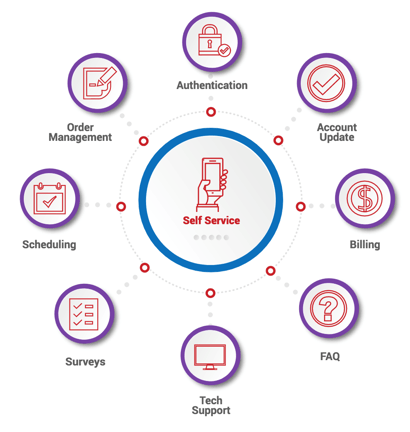
Welcome to our first edition of Leadership Team Blog articles for 2018, from CPM International Contact Centre, Barcelona " Artificial Intelligence & Machine Learning: Demystified " which comes from Emanuele Ceppelli, IT Director at CPM International Contact Centre.
"Artificial Intelligence & Machine Learning: Demystified"
Artificial intelligence (AI) is one of the most significant transformational break-throughs - and perhaps least understood - in modern times. In many ways, the charm of AI is that we don´t realize we are using it when we use Siri, Alexa, or when the phone automatically corrects your grammar.
In very good company with the more notorious innovations like the steam engine, electricity, and the combustion engine, AI is the most important general-purpose technology of our era. But, what is AI doing and how quickly is it improving? Two are the areas of progress that best support the AI journey to improvement: perception and cognition.
Perception
With regard to the “perception”, some of the most practical advances have been made in relation to speech. Voice recognition is still far from perfect, but millions of people are now using it — think Siri, Alexa, and Google Assistant as an example (by the way - this article was dictated to a computer and transcribed with sufficient accuracy).
These advances in voice recognition have evolved into the ability of a computer to recognize the human natural way of speaking. This ability is known as Natural Language Processing, or NLP. Rather than face limited touch-tone or rigid Directed Dialog, customers can now speak naturally to the device in use.
A study by the Stanford computer scientist James Landay and colleagues found that speech recognition is now about three times as fast, on average, as typing on a cell phone. The error rate, once 8.5%, has dropped to 4.9%. What’s striking is that this substantial improvement has come not over the past 10 years but just since the summer of 2016 (source: Stanford Education Research)
We are also assisting to a rapid improvement in the machine’s ability to recognize images.
An app running on your smartphone will recognize almost any bird in the wild. Image recognition is replacing ID cards and customers analytics, access control; public safety has also started counting massively on facial recognition.
Cognition
In terms of “cognition” on the other hand, the improvements are going as fast as those around “perception”.
Machine learning (ML), is based on learning from examples rather than a rigid code telling the software what to do and at what time. This is an important break from previous practice.
In a world where DATA are produced at an astonishing rate and machines can learn from examples, we have served the perfect loop for constantly feeding AI engines with relevant information to exponentially grow the ML capability.
A system using IBM technology automates the claims process at an insurance company in Singapore, and a system from Lumidatum, a data science platform firm, offers timely advice to improve customer support. Dozens of companies are using ML to decide which trades to execute on Wall Street, and more and more credit decisions are made with its help. Amazon employs ML to optimize inventory and improve product recommendations to customers. Infinite Analytics developed one ML system to predict whether a user would click on a particular ad, improving online ad placement for a global consumer packaged goods company. JPMorgan Chase introduced a system for reviewing commercial loan contracts; work that used to take loan officers 360,000 hours can now be done in a few seconds. And supervised learning systems are now being used to diagnose skin cancer (source: JPMorgan, Bloomberg)
Let´s see how AI can help our Contact Centres to deliver a better service more efficiently.
Powered by ML and NLP, an Intelligent Front Door replaces and upgrades traditional IVR routing. It allows offering the ease of conversational communication, with Natural Language intent capture at the outset of every call.
An Intelligent Front Door can provide benefits in:
- Personalisation
- Self Service
- Effective Agent
Personalisation
Customers are still calling and every year their expectations are higher than the previous year.
AI helps to offer a proactive and personalized experience from the start. With AI and the right data, customers are recognised and their needs anticipated.
Self-Service
More than half of the customers liaising with a Contact Centre wants to “self-serve”.
 source: smartactions (trademark)
source: smartactions (trademark)
With an AI engine and the right DATA, it is possible to provide a personalised and efficient self-service to customers starting from a natural conversation. Many are the processes that can be automated thanks to AI.
Effective Agent
By removing the initial contact steps thanks to an intelligent front door, Agents are talking only to the right customers and at the right moment, those that need them most. Customer experience success and failure often revolve around customers' experiences with Agents.
Since routing and self-service can be automated for the repeatable tasks, Agents are likely to be more engaged. They have access to calls and the most updated customer data through CTI and/or screen pops; warm transfers become the norm thanks to AI and as most of the customers hate repeating information, the Agents do not have to make them.
In summary, AI is likely not a fake and the first to use it effectively will reap the most benefits. Whilst still in its infancy phase, the pace of innovation is exponential and the signs of progress will never be so slow again. Speech recognition has reduced the error rate by 50% only in the last 12 months. This means that in a blink of an eye many Contact Centres will run AI engines as they have configured IVRs until now. But it is only through trial and error that businesses can reach effectiveness in using AI.
To find out more or if you have any questions, please contact Emanuele Ceppelli on: emanuele.ceppelli@cpm-int.com.


 2 minute read
2 minute read


